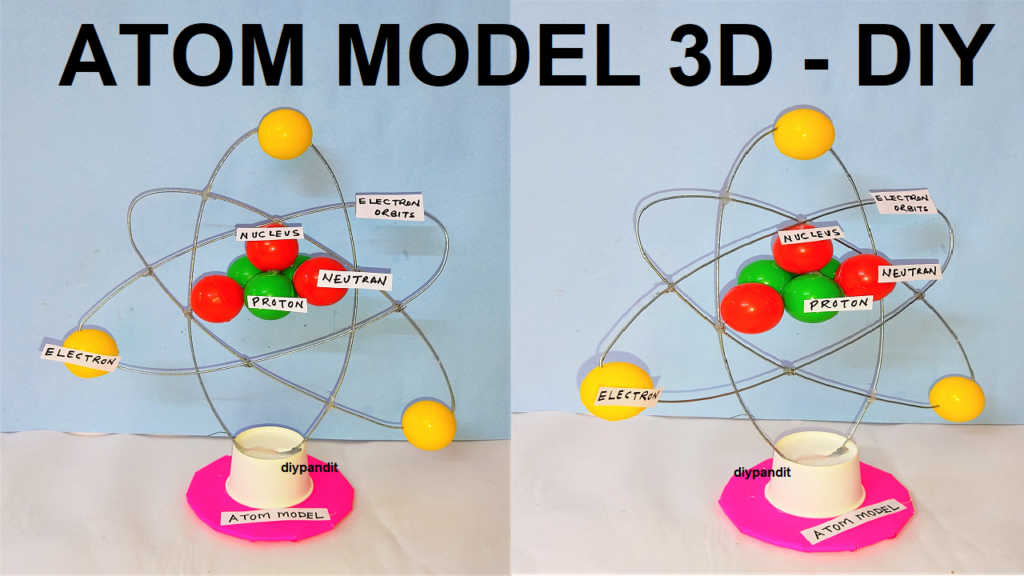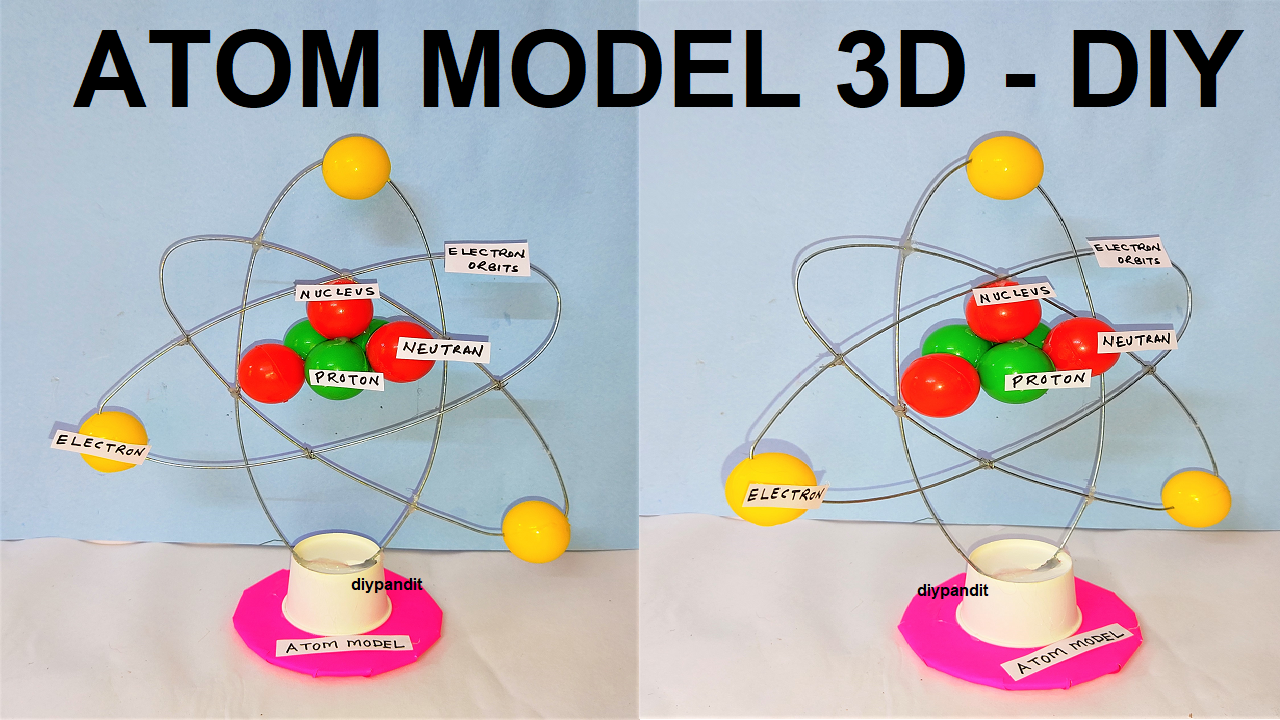Introduction:
In this project, we will create a 3D atom model for a school science exhibition using small balls, metal wire, and cardboard. The model will visually represent the structure of an atom, including its nucleus and electron shells, to help viewers understand the basic concepts of atomic structure.

Materials Needed:
- Small balls (different colors and sizes to represent protons, neutrons, and electrons)
- Metal wire (thin and flexible)
- Cardboard or foam board (for the base)
- Craft materials (markers, paint, labels, etc.)
- Adhesive (glue or double-sided tape)
Step-by-Step Explanation:
- Creating the Base:
- Cut a piece of cardboard or foam board to serve as the base of the atom model.
- Assembling the Nucleus:
- Choose a central location on the base to represent the nucleus of the atom.
- Arrange small balls of different colors to represent protons (positively charged) and neutrons (neutral) in the nucleus. Glue them in place.
- Making Electron Shells:
- Cut the metal wire into short pieces to represent electron shells.
- Attach one end of the wire to the nucleus and curve the wire outward to create concentric circles around the nucleus.
- Placing Electrons:
- Attach small balls to the ends of the metal wires to represent electrons (negatively charged) in their respective electron shells.
- Use different colors for electrons to differentiate between different energy levels.
- Adding Labels and Details:
- Use craft materials, markers, or paint to label the parts of the atom, including the nucleus, protons, neutrons, and electron shells.
- Add arrows or lines to represent the paths of electrons in their shells.
- Enhancing Realism:
- To represent the varying sizes of electrons and their probability clouds, arrange the electron balls at different distances from the nucleus.
Demonstrating the Atom Model:
- Explain the different components of the atom model, including the nucleus, protons, neutrons, and electron shells.
- Describe how the arrangement of electrons in different energy levels forms the atomic structure.
Conclusion: By constructing the 3D atom model using small balls, metal wire, and cardboard, you’ve effectively visualized the structure of an atom for your school science exhibition. This project allows viewers to gain insights into the fundamental building blocks of matter.

